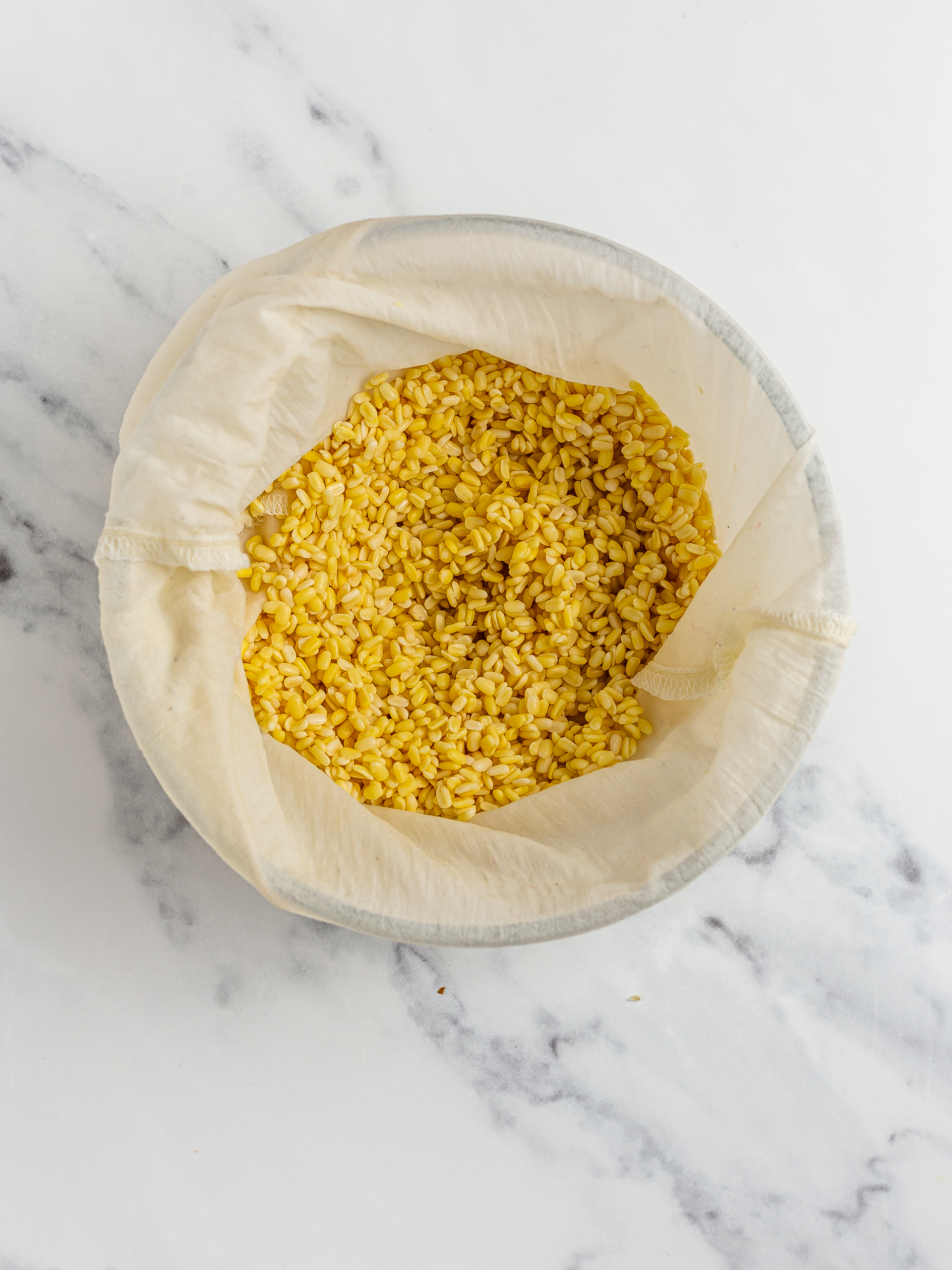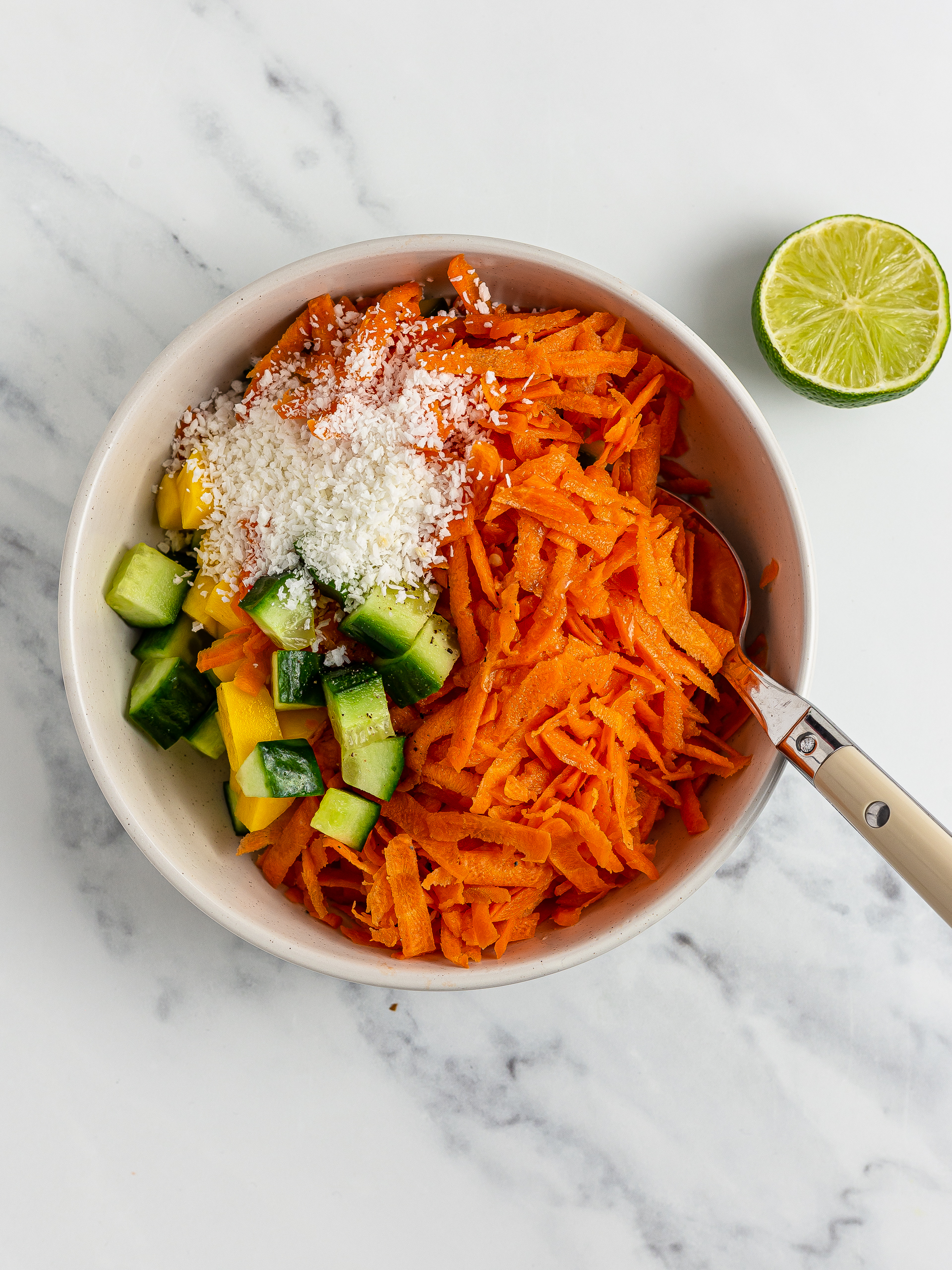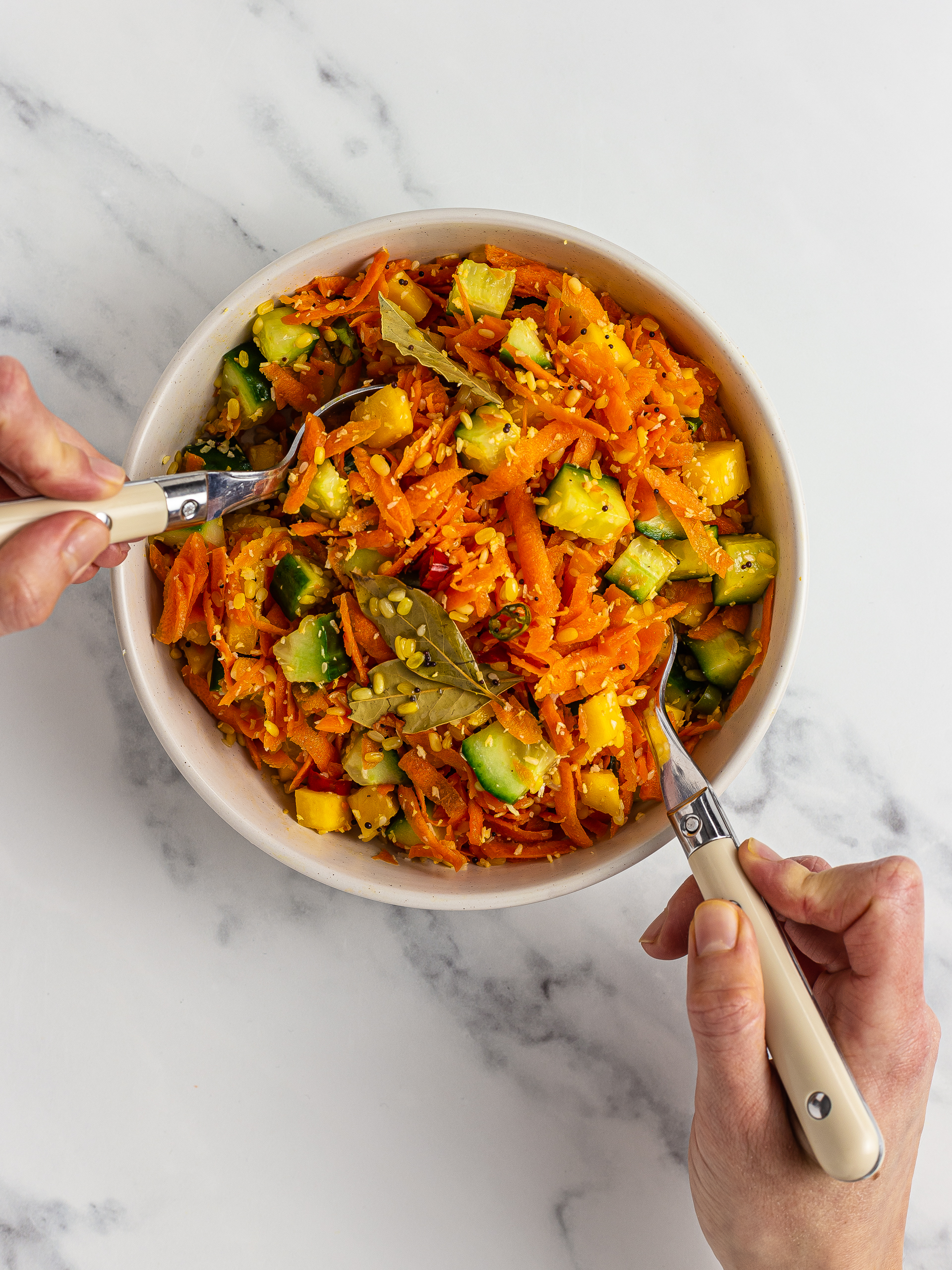Kosambari is a fresh Indian salad with pulses, great as a starter or as a snack. What makes this salad special is the mix of veggie used and the seasoning made from curry leaves and mustard. Below we'll show you how to make kosambari with grated carrots, cucumber, mango and shredded coconut.
The pulses used in the traditional kosambari are split bengal gram. These lentils come in many names. Depending on your region, you may find them in your local grocer as:
split Bengal gram
petite yellow lentils
split moong dal
split mung beans
split green gram
mung dal
They look like very tiny yellow (or green) split lentils. If you can't find them, you can also opt for bean sprouts.
In the classic kosambari recipe, you let these lentils soak for a few hours, and then eat them without further cooking. We have tested this technique, but we prefer to toast the lentils. Let us explain why we decided to alter the classic recipe this way.
Reason number one: flavour. All pulses contain a compound called saponin. If you have ever eaten raw beans or lentils and thought they tasted a bit like soap, you have saponin to thank. You can minimize this flavour by rinsing the beans thoroughly, but ultimately only cooking will get rid of it.
Reason number two: food safety. Eating raw pulses can have negative health effects due to a compound called lectin[1]. On top of it, we can't assume that the brand of beans out there are all organic and produced without using toxic chemicals.
To keep you happy, satisfied, and safe, we decided to toast the lentils just enough for them to be cooked but still crunchy. The lentils used here are very small, so 3 minutes of cooking was enough.
Overall, our carrot kosambari is a delightful and refreshing salad that you can serve as a starter to other Indian dishes. Soaking excluded, it will take you less than 10 minutes to put together.
Should I use fresh or dry coconut in kosambari?
You can use either fresh or dry grated coconut as an ingredient for kosambari. If it's in season, buy a fresh coconut and grate it yourself. It will taste better, and you'll have some yummy coconut milk as a bonus.
Which type of lentils should I use in kosambari?
Split Bengal gram lentils are the classic choice in kosambari. Other names these lentils go by are:
petite yellow lentils
split moong dal
split mung beans
split green gram
Can I use bean sprouts in kosambari?
Kosambari is prepared with split mung beans. If you find the lentils in their non-split form, you can buy those, and you can make them sprout.
To sprout mung beans, soak them in water for 6-8 hours. Drain the water completely and keep the container covered and away from the light. You should notice the beans will start shooting out sprouts within 24 hours, but it may take a bit longer depending on your climate. You can wait a couple more days if you want bigger sprouts, but remember to fill the container with water and then drain it at least once a day.
Of course, you can also buy pre-sprouted beans.
Another option in kosambari is to use the full mung beans without sprouting them. If so, we suggest you soak them for 2 hours and then cook them as we did in our recipe above. Doing this will remove the strong flavour of saponins and the get rid of the harmful lectins compound found in raw beans.
Ingredients
| Dry Mung Dal (Yellow Split Gram) | 160 g |
| Carrots | 150 g |
| Cucumber | 130 g |
| Desiccated Coconut | 8 g |
| Fresh Chillies | 2 |
| Lime | 1/2 |
| Mango | 80 g |
| Extra Virgin Olive Oil | 2 tbsp |
| Brown Mustard Seeds | 1/2 tsp |
| Sesame Seeds | 1/2 tsp |
| Curry Leaves | 4 |
Step 1
Rinse the mung dal thoroughly with a fine-mesh sieve or a cheesecloth.
Then add them to a bowl with warm water and allow to soak for 1 hour at room temperature.
The beans will soften and swell as they absorb the water.

Step 2
Next, drain the mung dal and rinse them thoroughly under cold water.
Again, you can use a fine-mesh sieve or a cheesecloth to do it.

Step 3
While the beans soak, let's get the salad ingredients ready.
Peel and grate the carrots, chop the cucumber, and dice the mango.

Step 4
Combine the prepared carrot, cucumber, and mango with dry coconut flakes and lime juice.

Step 5
Sizzle the olive oil with mustard seeds, sesame seeds, chopped chillies and curry leaves until fragrant.

Step 6
Then, add the mung dal beans and sautée them for 3-5 minutes.

Step 7
Finally, add the seasoned mung dal to the salad, give all a good mix and serve.

Tips
You can replace curry leaves with a mix of bay leaves and lime zest.
